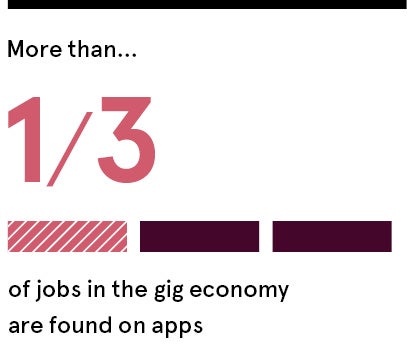In the age of rapid disruption and digitalisation, the human resources industry is in the thick of it. In the industrial and service sectors, such as hospitality and facilities management, where the gig economy has been growing exponentially, there has traditionally been a greater ratio of permanent employees to internal casuals; this is changing.
In 2016, one in twenty adults took on gig work at least once a week to supplement other forms of income; today this number has doubled to one in ten, according to a survey conducted by the University of Hertfordshire and data collected by Ipsos MORI. Whether this is due to how casual workers find job satisfaction or if it’s a mere lifestyle choice, the fact is casual work is on the rise. 
This being the case, employers are now curious about how their casual workforce operate within the larger gig economy, and for good reason. Employee engagement and loyalty are a growing concern, as casual staff now have more options and will go to work where they want, when they want.
For businesses, one of the main blockers for successfully running a casual workforce is tech-adaptation. Many businesses, big and small, are still not equipped with the right tools or mindset to respond to the changes taking place in their industry’s workforce. Gone are the days of WhatsApp rota group chats, phone calls, and manual spreadsheets. To get the engagement and enrolment needed for survival, organisations must adapt their tools and talent pools.
The solution: democratise work with technology
The key to adapt to the changes in the workforce brought on by the gig economy is to democratise work through technology. By responding to the way internal casual workers are approaching temp work, businesses can manage and benefit from what seems to be the downfalls of the trend. By offering a digital experience for casuals and enabling them to work across multiple sites within the organisation, employers will win over engagement and maximise staff utilisation.
This is the exact gig economy transition that we, at Syft, offer with our SyftForce platform. SyftForce is built to counter the friction between businesses, casual workers and the growing gig economy. With our mobile and web apps, SyftForce streamlines the processes of managing work for both parties, while democratising casual work. This is done by creating transparency and efficiency between employers and the workforce.
SyftForce equips businesses to thrive in the gig economy
Democratising casual work means both employers and workers enjoy better control and choice over when and where they work. SyftForce helps businesses and casual workers find one another at the click of a button, confirming shift booking and attendance, instantly.
 Besides managing permanent staff and internal casuals simultaneously on one merged platform, SyftForce enables businesses to connect with existing agencies, as well as benefit from Syft’s marketplace of vetted casuals.
Besides managing permanent staff and internal casuals simultaneously on one merged platform, SyftForce enables businesses to connect with existing agencies, as well as benefit from Syft’s marketplace of vetted casuals.
Dubbed Syfters, our temp staff network consists of more than 33,000 workers in hospitality, facilities management and the industrial sector. Syfters undergo a vetting process by which we verify their skills, experiences and ensure legal compliance. The credibility of the workers through our Uber-like rating system is intended for accountability with both the Syfters and employers, boasting a high average worker rating and a no-show rate of less than 3 per cent.
When push comes to shove, it is all about creating the future of work together and digitalisation of the gig economy allows us to do exactly this: quality casual workers at the click of a button.
For more information please visit www.syftapp.com or call +44 330 128 1418

The solution: democratise work with technology
SyftForce equips businesses to thrive in the gig economy

